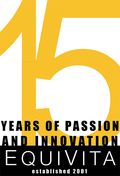After intense exercise, a good rule of thumb is to replenish as soon as possible. The body begins key functions after intense exercise, including protein synthesis (process of making new proteins) and glycogenesis (assisting with insulin production). Glycogenesis aids the protein synthesis process which requires glucose or simple sugar. But just as every body is different in it’s pre-exercise nutrition, post-exercise nutrition will differ as well. Post-exercise protein benefits might not be necessary for females as estrogen has a protective effect on skeletal muscle, minimizing the damage caused during exercise. On the other hand, males might need a higher amount of post-exercise nutrition due to the damage of muscle proteins and the diversion of amino acids and energy away from the process of protein synthesis during exercise. Getting simple sugar within 30 minutes of exercise both replenishes the glycogen used, plus provides necessary glucose for muscle recovery and building during the protein synthesis function in bodies when needed.
Without key nutrients at the right time, the body can begin breaking down rather than building up, which can affect the ability to reach fitness goals. If you’re feeling like your body is taking too long to recover or having difficulty reaching goals such as strength building, re-evaluating your nutrition is a good place to start—both what you’re intaking, and when.
Best,
Katherine
References
- Beck, K. L., Thomson, J. S., Swift, R. J., & Von Hurst, P. R. (2015). Role of nutrition in performance enhancement and postexercise recovery. Open access journal of sports medicine, 6, 259.
- Bonci, L. J. (2011). Eating for performance: bringing science to the training table. Clinics in sports medicine, 30(3), 661.
- Levenhagen, D. K., Gresham, J. D., Carlson, M. G., Maron, D. J., Borel, M. J., & Flakoll, P. J. (2001). Postexercise nutrient intake timing in humans is critical to recovery of leg glucose and protein homeostasis. American Journal of Physiology-Endocrinology And Metabolism, 280(6), E982-E993.
- MEAL, M., & PLAN, M. The Science Behind Eating Before/After Exercise.

 RSS Feed
RSS Feed
